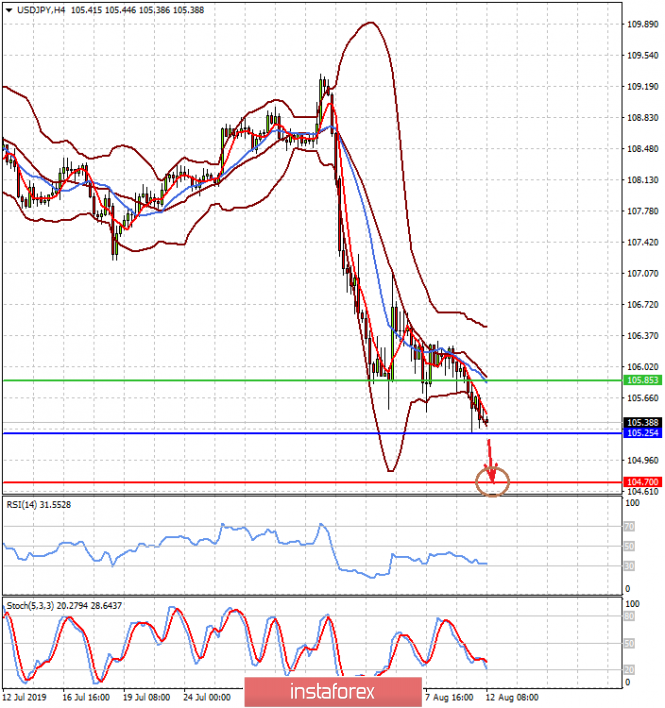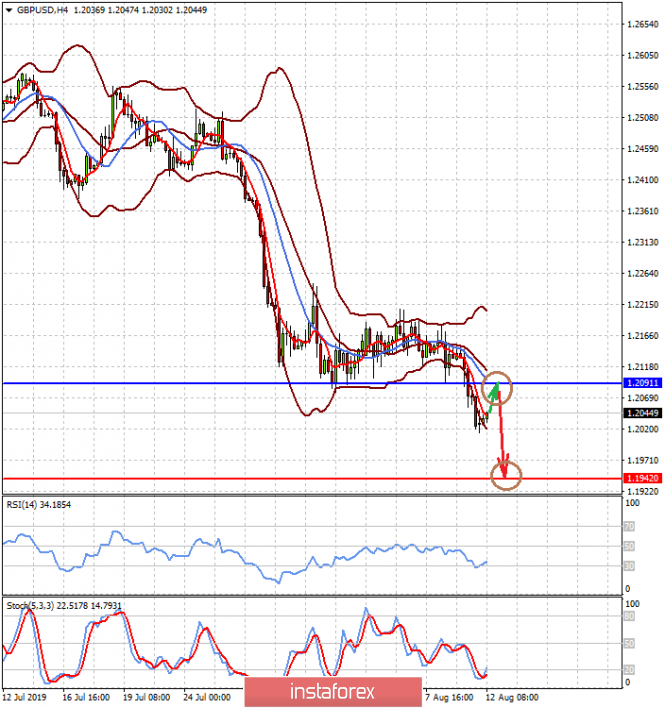The week ended under the sign of the strengthening of the trade war between the United States and China after the Chinese authorities decided to significantly reduce the exchange rate of its national currency against the US dollar.
Against this background, the desire of investors to buy risky assets – shares of companies, commodity-raw assets, fell sharply, and the US dollar was trading in different directions. It fell against the safe-haven currencies – the Japanese yen, the Swiss franc, as well as the euro, which over the past ten years has also acquired the status of an antipode asset to the dollar both in cases of increased demand for risk and in situations where market participants move away from risky transactions. The price of gold also received support. But at the same time, commodity currencies fell, such as the Australian and New Zealand dollars and the Russian ruble.
Today, the activity in the markets may be significantly lower than usual, which can be explained, on the one hand, by the lack of important economic data for publication and expectations of some significant events, and on the other, by the height of the holiday season, when investors' activity traditionally falls.
This week, attention will undoubtedly be drawn to the published data on consumer inflation, retail sales, industrial production and the number of construction permits issued in the States. According to forecasts, inflation pressure is expected to increase in annual terms by 1.7% against 1.6%, and on a monthly basis for July, its increase by 0.3% against 0.1% a month earlier. But the annual value of the base inflation will have to maintain the growth rate of 2.1% and to decline in growth from 0.3% to 0.2% over the past month. It is also expected that the value of retail sales in July will fall from 0.4% to 0.3%, while the volume of industrial production, on the contrary, will add 0.1% against zero growth a month earlier, as well as an increase in the number of construction permits and the volume of construction of new houses.
In addition to the US statistics, intermediate GDP figures for the 2nd quarter in Germany and the eurozone will be interesting this week. It is expected to maintain the previous growth rates for both Germany and the euro area at 0.2% for the quarter and 1.1% for the year.
In general, observing the incoming data of economic statistics primarily from the United States, we can say that the Fed still faces a difficult task, which is the ambiguity of the incoming data. This will constrain the possibility of a more active reduction in interest rates, which is eagerly awaited by the markets, and only strong signals about the risks of the coming recession can force the US regulator to become more active. In this case, we can expect a full-scale change in the trend of the dollar and its global weakening.
Forecast of the day:
The USDJPY pair remains in a short-term downward trend on the wave of the uncertainty of the Fed's future monetary policy. If prices are held below $105.85 and will drop below the level of 105.25, it is necessary to sell a likely target of 104.70.
The pair GBPUSD slowed the decline and may roll back to 1.2090 or even higher to 1.2100, but most likely it will continue to fall on the Brexit factor and the deterioration of the British economy.


